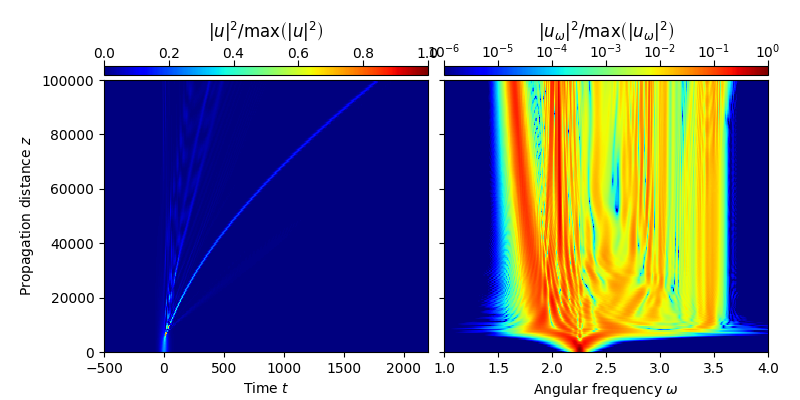Note
Click here to download the full example code
1.1.1. Using fmas as a black-box application¶
This examples shows how to use py-fmas as a black-box application, that only requires a minimal amount of scripting.
We start by simply importing the required fmas into the current namespace.
import fmas
If an adequate input file is located within the current working directory, fmas can be used as shown below. It features a particular function called run, which reads-in the propagation setting stored in the input file input_file.h5 and runs the simulaton
res = fmas.run('input_file.h5', model_type='FMAS_S_R', solver_type='IFM_RK4IP')
An example that shows how an adequate input file can be generated via python is shown under the link below:
After the proapgation algorithm (specified in input_file.h5) terminates, a simple dictionary data structure with the following keys is available
print(res.keys())
Out:
dict_keys(['t', 'z', 'w', 'u', 'Cp'])
A simple plot that shows the result of the simulation run can be produced using function plot_evolution implemented in module tools
from fmas.tools import plot_evolution
plot_evolution( res['z'], res['t'], res['u'], t_lim=(-500,2200), w_lim=(1.,4.))

The results can be stored for later postprocessing using the function save_h5 implemented in module data_io. It will generate a file out_file.h5 with HDF5 format in the current working directory
from fmas.data_io import save_h5
save_h5('out_file.h5', **res)
Total running time of the script: ( 0 minutes 34.211 seconds)